Sacred to Apollo, god of the sun, swans are often used to symbolize divinity and purity. Other than their romantic relationships, these birds are well-known for their gracefulness and longevity.
Having said that, how long can swans live?
In this article, we’re going to tackle this subject alongside a few other points, so stay tuned to know about swan lifespan and how it varies from one species to another.
Table of Contents
How Long Do Swans Live?
The average lifespan of swans ranges between 20 to 30 years, with variations existing according to the type of species and their environment.
Swans living in captivity usually outlive those who live the wild. This is because swans living in the wild have a high chance of being chased down and hunted by humans and various predators, such as foxes.
Once a cygnet hatches, it stays with its parents for around 5 to 10 months, mainly till the next spring following their hatching. At the age of 4 months, young cygnets begin to learn how to fly.
This is where their mortality rate increases.
Man-made constructions make up a challenge for young cygnets. Since they aren’t familiar with structures like bridges, cygnets can collide with them during their flights, resulting in fatal injuries or even death.
Upon reaching the age of 10 months, young cygnets will leave their parents’ nest to join in a flock of swans, where they stay in the flock till they reach maturity.
Although swans reach sexual maturity at the age of two years, some might not begin mating until they reach the age of 3-7 years old.
Swans are widely known for their monogamous relationships, where they mate with only one partner for the rest of their lives. However, that isn’t entirely true.
‘Divorce’ cases can occur between swan pairs. As stated by a Cornell University ornithologist, as much as five percent of whooper swan pairings end up in separation.
Reasons vary as to why divorce occurs between these birds, so they might not be as faithful as we thought they were.
Different Types of Swans and Their Lifespans
Even though swans are commonly found in the wild, you’d be surprised to know there are only 8 existing species of these birds around the globe.
We’ve picked 5 out of those 8 species to display each of their lifespans and highlight some of their characteristics.
Black Swans
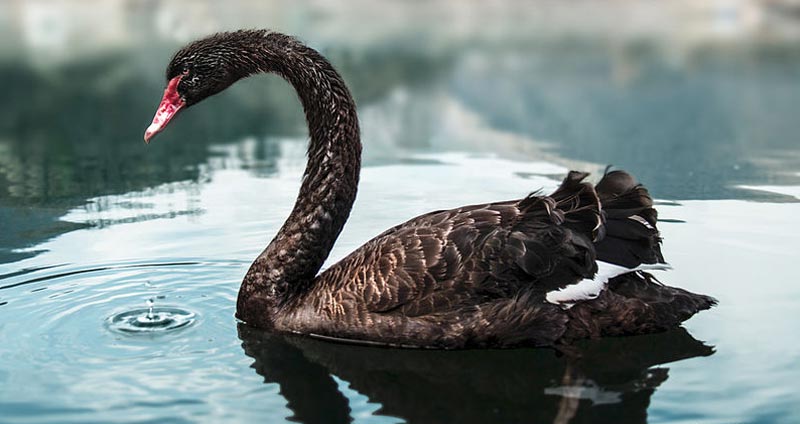
Aside from their distinctive black feathers, black swans also differ in their habitat than their waterfowl parallels.
Freshwater isn’t black swans’ only habitat, where they can inhabit terrains with salty or saline water sources. You can find black swans paddling away in swamps, marshes, ocean shores, and just about anywhere with a water supply.
Though black swans can be bred in captivity, they aren’t fully domesticated birds. In other words, keeping a black swan as a pet would be a difficult task.
Wild Lifespan
- 10 – 15 years
Domestic Lifespan
- 30 – 40 years
Whooper Swans
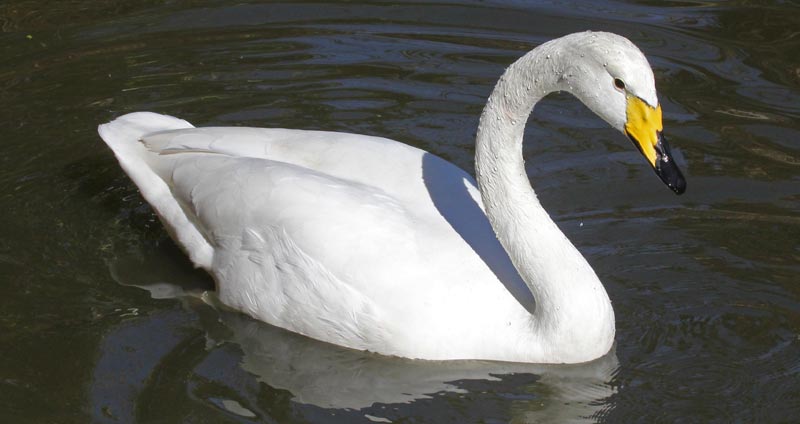
Whooper swans spend their springs migrating to their wintering sites and back to their native lands in Europe and some parts of Asia.
All birds migrate from one place to another at some time of the year, so what makes the migration of whooper swans impressive?
Just like other kinds of swans, whooper swans fly at high altitudes when migrating. They can reach an altitude of 27 thousand feet (8,200 meters), making them among the highest soaring birds.
Wild Lifespan
- 10 – 15 years
Domestic Lifespan
- 12 – 16 years
Mute Swans
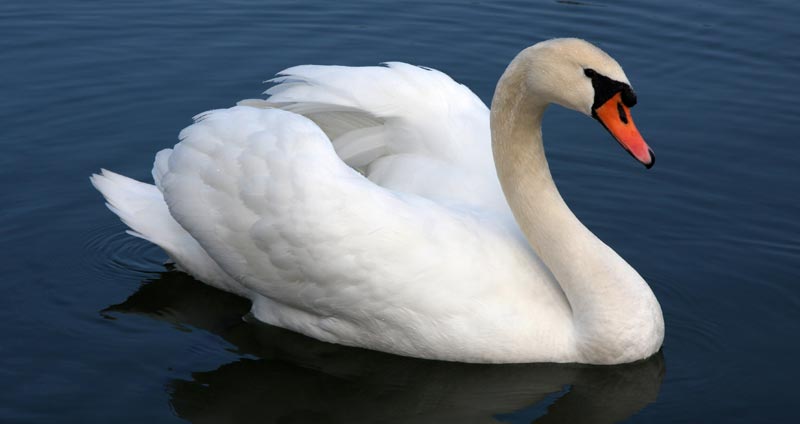
You can consider mute swans as one of the largest swan species of the Cygnus genus. They’re often confused with the other two species of the genus, whooper and Bewick’s swans because of their strikingly similar appearance.
The reason why they’re called ‘mute’ is that their honks are less vocalized than other types of swans. Mute swans produce a sound equivalent to hissing or soft snoring that increases in volume when they’re threatened or aggravated.
Wild Lifespan
- ~ 19 years
Domestic Lifespan
- 30 – 40 years
Black-necked Swans
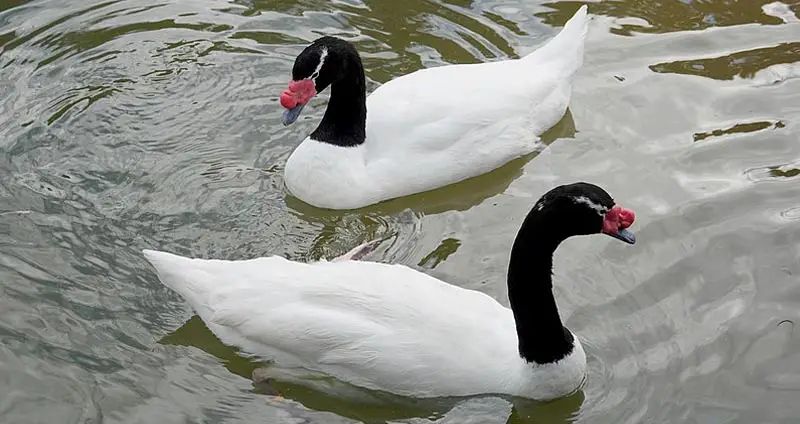
Not only are these swans famous for the black feathers exclusively covering their necks, they’re quite known for the red knobs found at the top of their beaks as well.
These knobs are found in both male and female black-necked swans, but they tend to be larger in size in males, especially during mating season.
Black-necked cygnets are born with white, almost gray feathers. Their feathers start to darken by the age of 3 months. By the age of 2 years, they claim their unique black and white covering.
Wild Lifespan
- 10 – 30 years
Domestic Lifespan
- 7 – 20 years
Tundra Swans
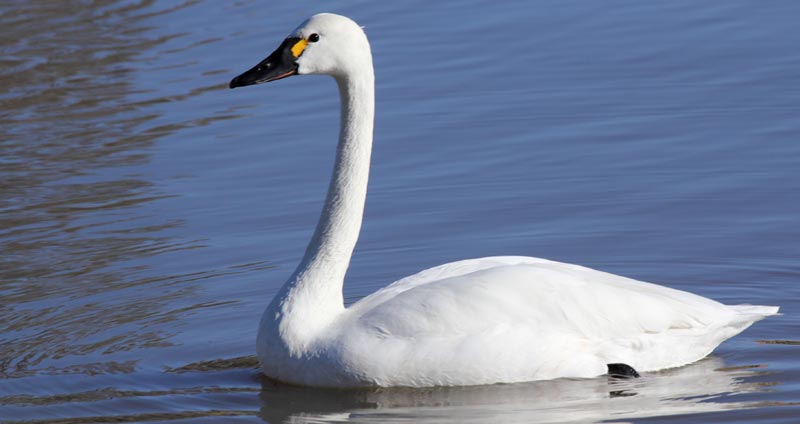
If you have witnessed a flock of swans flying with their necks cartoonishly extended, chances are you saw a flock of tundra swans.
Tundra swans always have their necks straightened out, whether they’re paddling, migrating, or even walking. Putting that fact into consideration, tundra swans are easy to distinguish among other species or subspecies.
Wild Lifespan
- 10 – 20 years
Domestic Lifespan
- 20 – 25 years
Why Do Swans Have a Long Life Expectancy in Captivity?
Swans can be a bit pestering when kept as pets, since they aren’t adapted to domestication. By saying that, you’d expect them to have a shorter lifetime in captivity, right?
Well, it’s the other way around. Nearly every species we’ve mentioned above last longer in captivity than in the wild, so what might be the reasons behind that?
Predators
Swans have a few natural predators, including raccoons, snakes, wild hounds, and hawks.
Most of these predators target eggs and young cygnets rather than adults swans. Raccoons, for example, would steal swan eggs or kill the cygnets they can find.
Weak Defense Mechanisms
This doesn’t imply for defenseless cygnets only. Swans are limited when it comes to their defense mechanisms, and although they can use their beaks as a method of attacking nearby predators, it can only do so much damage.
Hunting
Humans are at the top of the list of swan predators. Swans are hunted down by humans for their splendid feathers. Although swans aren’t killed for their meat anymore, they’re still being hunted down for their coatings.
Conclusion
Swans are stunning birds that shouldn’t be hunted down just for their appearance. Keep in mind that they’re quite the commitment if you’re planning to purchase one and keep it as a pet.
We hope this article has helped you identify different swan lifespans and their varying species.

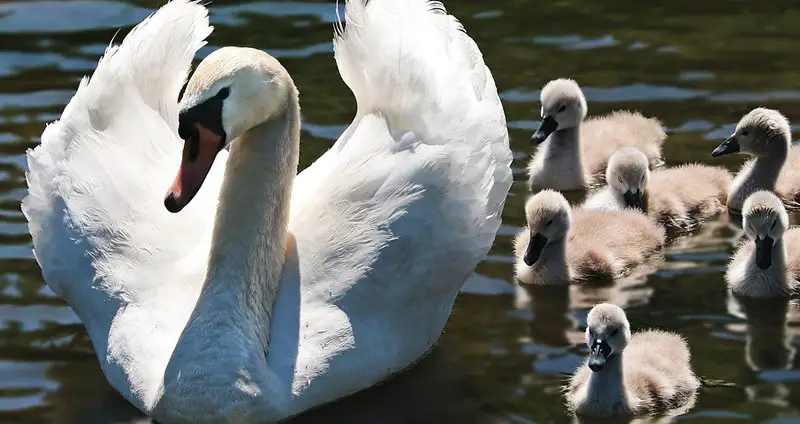
The State of Idaho opened swan hunting for the First time ever on OCTOBER 19, 2020 Why would they do that? Certainly do not see that many around? Especially in the northern part of the State?